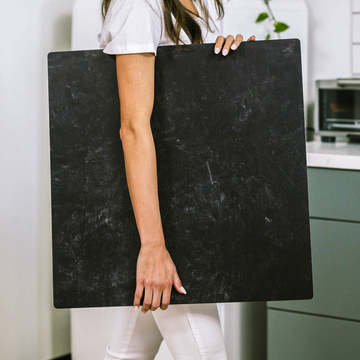If you’ve ever felt frustrated by product photos that don’t quite “pop,” chances are, your background board could be the missing piece. While most people see backdrops as simple props, seasoned photographers treat them as vital tools-shaping light, color, and even how your product is perceived. Want to know why? The answer lies in a fascinating blend of physics, optics, and materials science.
This isn’t just about picking a background that “looks pretty.” The right board does far more heavy lifting in your image than you might imagine. Let’s pull back the curtain and explore the hidden science that separates everyday product shots from those that command attention and drive sales.
Surface Magic: Light, Texture, and Gloss
A photo background isn’t simply matte or glossy-it’s defined by how it reflects and scatters light. You might have noticed some backgrounds cause intense glare, while others make products appear flat. These effects all come down to the board’s reflectance properties.
- Matte (Diffuse) Surfaces: These evenly scatter light, creating soft, shadowless images that highlight your product without annoying glare. It’s the secret behind clean, professional-looking shots.
- Semi-Gloss Surfaces: Savvy photographers sometimes use boards with just a hint of sheen. Why? A gentle specular highlight adds depth, turning a flat image into one with dimension and subtle luxury.
Pro Tip:
If you shoot shiny objects-like jewelry or glassware-a board with directional grain can add sleek, designer reflections that give your images an upscale vibe.
Mastering Color: The Board’s Hidden Influence
Ever notice your “white” background looks yellow under one light and blue under another? The culprit is often your backdrop, not your bulbs. High-quality boards are scientifically engineered to reflect all colors of light evenly, ensuring your product colors stay true-no matter what lighting you use.
Metamerism-the phenomenon where colors shift under different lights-is another snag. That’s why the best surfaces are tested for “colorfastness under mixed lighting,” so your images stay consistent everywhere from your studio to your customer’s phone.
Why Microtexture Matters More Than You Think
Most articles focus on visual texture for styling, but real pros know that microtexture-the barely-visible relief on your board’s surface-impacts your photos in subtle ways. Fine microtexture prevents products from looking like they’re floating, grounding them with ultra-soft, natural shadows. Chunkier textures, on the other hand, can cast harsh shadows and distract from your subject.
- Look for boards with advanced printing and embossing for balanced, photogenic microtexture.
- Test with close-ups: the right board keeps surfaces looking clean, not “muddy,” even under macro lenses.
Static: The Invisible Lint Magnet
Nothing ruins a crisp product shot like stray dust or hair. Some materials-especially lower-cost plastics-build static electricity and attract every bit of fluff in your studio. Premium background boards often come with anti-static coatings or conductive layers to keep them spotless, so your editing time stays short.
The Hidden Cost of Poor Materials
Great boards aren’t just about short-term looks. Thermal and chemical stability matter for long-term use. Inferior boards might warp in warm window light or stain after repeated contact with food, liquid, or props. Choose surfaces designed to resist bowing and staining, especially for frequent shooters or food photographers.
The Takeaway: Treat Your Board Like a Tool, Not a Prop
Choosing the right background isn’t just about taste-it’s about understanding how light, color, and material science come together to enhance your product photos. The best photographers treat their boards as a critical piece of their kit, almost as important as their lights or lenses. When you appreciate what’s happening under the surface, you can dial in exactly the look you want-consistently.
- Ask for technical specs like gloss level and color profile before you buy.
- Test under your own lighting setup using a color checker for accuracy.
- Invest in anti-static and microtexture features-not just pretty prints.
- Think of your board as a light modifier-moving it or tilting it changes everything.
Ready to dig even deeper? Stay tuned for more practical, science-backed tips in our upcoming posts. The right board-chosen with care and knowledge-unlocks images you can be genuinely proud of.



